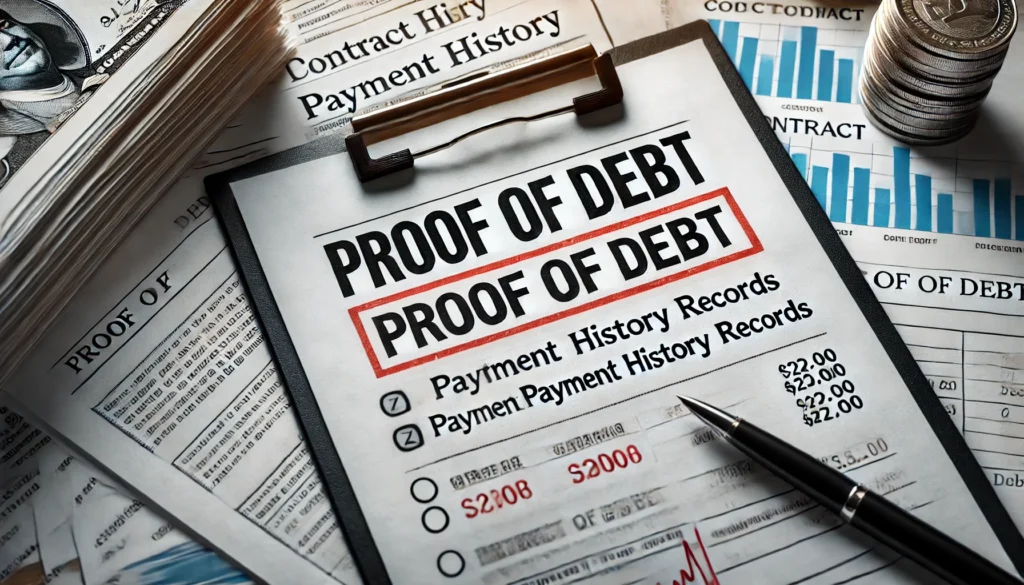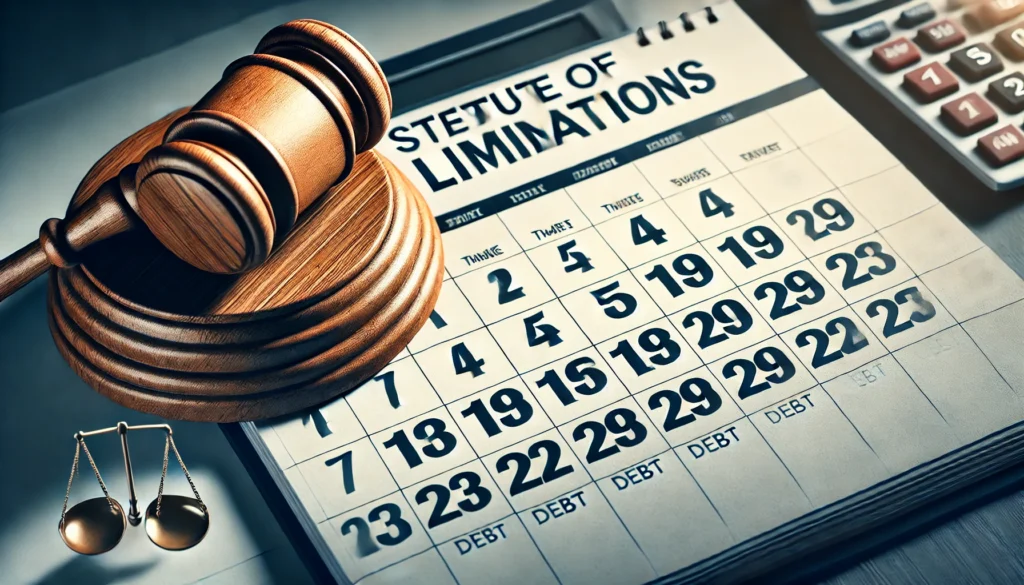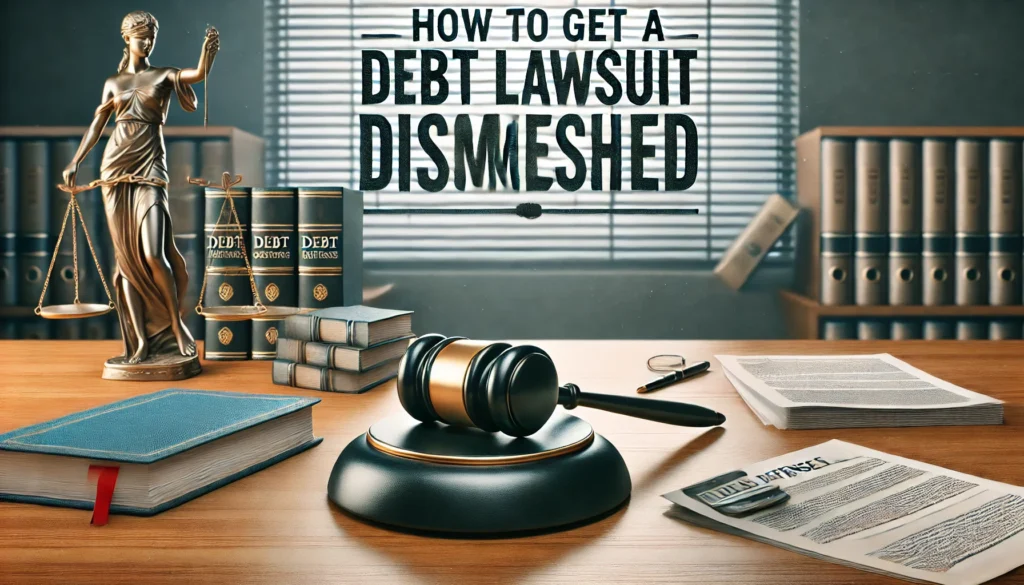If you are facing a debt lawsuit, it can feel daunting and stressful. The good news is that you don’t have to go through the process alone. There are several strategies you can employ on how to get a debt lawsuit dismissed, or at the very least, reduce the financial burden it causes. Whether the lawsuit was filed incorrectly, the debt is too old, or the creditor doesn’t have the right to sue you, you have the ability to defend yourself. In this article, we will break down the steps you can take on how to get a debt lawsuit dismissed.
Understand the Lawsuit
When you are sued for a debt, you’ll typically receive a summons and a complaint. These documents are the first indication that someone is taking legal action against you. The summons notifies you of the lawsuit, while the complaint details the creditor’s claims against you, including how much you owe and the basis for the lawsuit.
Key Points to Focus On
- Review the documents carefully: The summons and complaint will outline what the creditor is claiming. They will also include the date by which you must respond. Missing this deadline could result in a default judgment being issued against you.
- Understand the allegations: Make sure the debt in question is accurate. Sometimes, creditors sue over debts that aren’t actually yours, or they claim amounts that are incorrect.
How to Get a Debt Lawsuit Dismissed: Step-by-Step Guide
Facing a debt lawsuit can be overwhelming, but there are ways to take control and potentially have the case dismissed. The first step is to respond to the lawsuit promptly. Filing a formal answer with the court is crucial to avoid a default judgment, which would allow the creditor to garnish your wages or seize assets. Make sure your response denies or disputes any inaccurate claims and outlines valid defenses, such as the debt being paid or errors in the lawsuit.
Another effective approach is to verify whether the creditor has the legal right to sue you. Often, debts are sold to third-party collectors, and they must prove ownership of the debt. Request documentation showing how the debt was transferred from the original lender to the creditor suing you. If they fail to provide this proof, the lawsuit may be dismissed.
Demanding detailed documentation of the debt is also essential. Creditors are required to prove the debt’s existence, the amount owed, and their right to collect it. Ask for the original agreement, a full payment history, and proof of ownership. If these documents aren’t provided, you can argue that there is insufficient evidence to proceed with the case.
Checking the statute of limitations is another important step. Each state has a time limit on how long creditors can sue for unpaid debts, typically ranging from three to ten years. If the lawsuit is filed after this period, you can file a motion to dismiss the case based on the expired statute of limitations.
Finally, look for any procedural errors in how the lawsuit was filed or served. Common mistakes include improper service of the documents or errors in the complaint, such as incorrect debt amounts. Highlight these issues in court and request dismissal if applicable.
Respond to the Lawsuit
Once you receive the lawsuit documents, it is important to file a formal answer with the court. The answer is your opportunity to dispute the creditor’s claims. If you don’t file an answer, the court may rule in favor of the creditor, resulting in a default judgment.
Steps to Take
- File an answer on time: You’ll need to respond within the deadline provided in the summons, typically between 20 and 30 days, depending on your state’s rules.
- Dispute inaccurate claims: If you believe the debt is not yours or the amount is incorrect, your answer should clearly state these points. For example, if you paid off the debt or it was already discharged in bankruptcy, mention these facts in your answer.
Verify the Plaintiff’s Standing
One of the most common reasons a debt lawsuit can be dismissed is that the creditor doesn’t actually have the right to sue you. This legal right is called standing, and it’s important to verify that the plaintiff (the entity suing you) has the legal authority to collect the debt.
What to Do
- Ask for proof: You can request that the plaintiff provide documentation proving they own the debt. If the debt has been sold or assigned to another party, the creditor must show that they have the legal right to collect it from you.
- Demand evidence: Make sure the plaintiff has the original contract, a complete payment history, and proof of the debt’s chain of ownership. Without this evidence, they may not have the standing required to bring the lawsuit against you.
Demand Proof of the Debt
You are entitled to ask the creditor to provide proof of the debt. This includes showing that the debt is yours and how much you owe. Many lawsuits fail because creditors cannot provide sufficient evidence to support their claims.
What You Should Request
- Original loan agreements or contracts: These documents should show that you agreed to the debt and the terms.
- Payment history: This will provide a clear picture of the debt’s origin and the balance due.
- Proof of debt ownership: If the debt has been sold to a third party, the creditor must show that they have the right to collect.
If the creditor cannot provide adequate proof, you may have grounds to request the case be dismissed.
Check the Statute of Limitations
Every debt has a statute of limitations, which is the time limit in which a creditor can file a lawsuit to collect the debt. If the creditor has waited too long to sue you, the court may dismiss the case.
Steps to Check the Statute of Limitations
- Know the time limit: Each state has its own statute of limitations for different types of debt, typically ranging from 3 to 10 years.
- Check the date of your last payment: The statute of limitations often starts from the last time you made a payment on the debt or acknowledged it in writing.
- File a motion to dismiss: If the statute of limitations has passed, file a motion with the court asking for the lawsuit to be dismissed based on this legal defense.
Look for Procedural Errors
Lawsuits must follow strict legal procedures, and if the creditor makes any procedural errors, it could result in the dismissal of the case.
Common Errors to Look For
- Improper service of process: This occurs when the creditor fails to properly serve you with the lawsuit documents. Each state has strict rules about how and where legal documents must be delivered.
- Incorrect or incomplete complaint: If the creditor’s complaint is vague or contains incorrect details, such as the wrong amount of the debt or wrong account information, this could provide a basis for dismissal.
If you identify any procedural mistakes, you can file a motion to dismiss and request the case be thrown out.
File a Motion to Dismiss
If you have valid legal grounds, such as lack of standing, expired statute of limitations, or procedural errors, you can file a motion to dismiss. A motion to dismiss is a formal request asking the court to end the case before it goes to trial.
How to File a Motion
- Identify legal grounds for dismissal: Make sure you have strong reasons, such as the lack of evidence or expired deadlines.
- Submit your motion to the court: Follow the court’s procedures for filing motions, and be sure to provide supporting evidence and documentation.
- Wait for a ruling: The court will review your motion and decide whether to dismiss the case or allow it to continue.
Negotiate or Settle
If getting the lawsuit dismissed isn’t feasible or you prefer a quicker resolution, you can try to negotiate or settle with the creditor. Many creditors are willing to accept a reduced payment amount or agree to a payment plan to avoid the time and expense of a trial.
How to Negotiate
- Make an offer: You might propose a lump-sum settlement for a lower amount than what is owed, or request a more manageable payment plan.
- Ask for dismissal: Ensure that any settlement agreement includes the creditor agreeing to dismiss the lawsuit upon receipt of payment.
Settling or negotiating is often a better option if you want to avoid a long, drawn-out court battle.
Attend Court Hearings
Even if you file a motion to dismiss or negotiate a settlement, you still need to attend any scheduled court hearings. Failing to show up could result in a default judgment against you.
How to Prepare for Court
- Bring all necessary documentation: This might include evidence of payments, proof that the debt is too old, or documentation that the creditor doesn’t have standing.
- Stay organized: Be prepared to present your case clearly and concisely to the judge.
Seek Legal Assistance
If the process feels complicated or you’re unsure of the best course of action, it’s always a good idea to consult with an attorney. A lawyer experienced in debt defense can help you understand your options, identify the best strategy, and represent you in court if needed.
Options for Legal Help
- Legal aid services: Many organizations offer free or low-cost legal assistance to individuals facing debt lawsuits.
- Hire an attorney: While hiring a private attorney may have upfront costs, their expertise can improve your chances of success.
Last Word
Understanding how to get a debt lawsuit dismissed can save you from unnecessary financial and legal stress. By taking proactive steps, such as filing a timely response, demanding proof of the debt, and verifying the creditor’s legal standing, you can strengthen your defense. Each action you take ensures your rights are protected and forces the creditor to prove their case.
Always check for critical defenses, like the statute of limitations or procedural errors, that could lead to an immediate dismissal. If the creditor lacks sufficient evidence or makes mistakes in the filing, you have solid grounds to request the case be thrown out.
Remember, the key to success lies in acting quickly and staying informed. Whether you handle the case on your own or seek legal advice, knowing your options on how to get a debt lawsuit dismissed can help you achieve the best possible outcome.
FAQs
What happens if I don’t respond to a debt lawsuit?
Failure to respond results in a default judgment, allowing creditors to garnish wages or seize assets.
Can I request proof of the debt in court?
Yes, you can demand documents like the original contract, payment history, and proof the creditor owns the debt.
Is it possible to dismiss a debt lawsuit due to old debt?
Yes, if the debt is beyond the statute of limitations, you can file a motion to dismiss the lawsuit.
What are common procedural errors that lead to dismissal?
Improper service of documents or errors in the complaint, such as wrong debt amounts, can lead to dismissal.
Do I need a lawyer to get a debt lawsuit dismissed?
Not necessarily, but legal assistance can increase your chances by identifying defenses and filing motions correctly.
Article Recommendations
Armaid Complaint Sony Beverly Slate Lawsuit: Analyzing the Role of Hedge Funds in Hollywood Disputes
Navigating Personal Injury Settlements: Strategies for Maximizing Compensation




